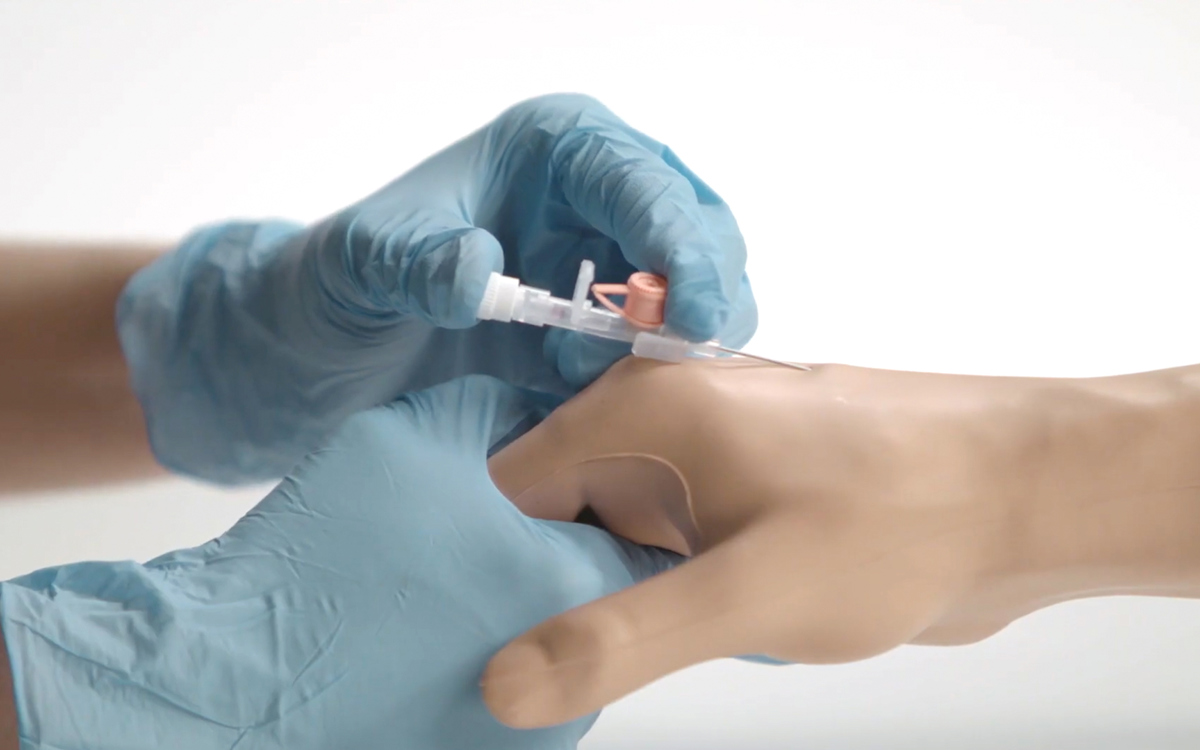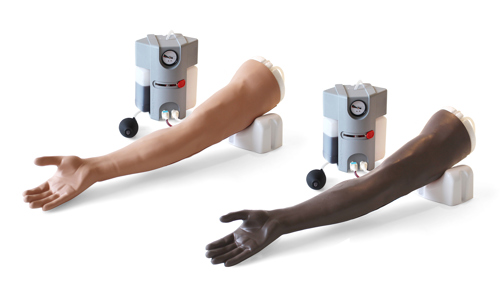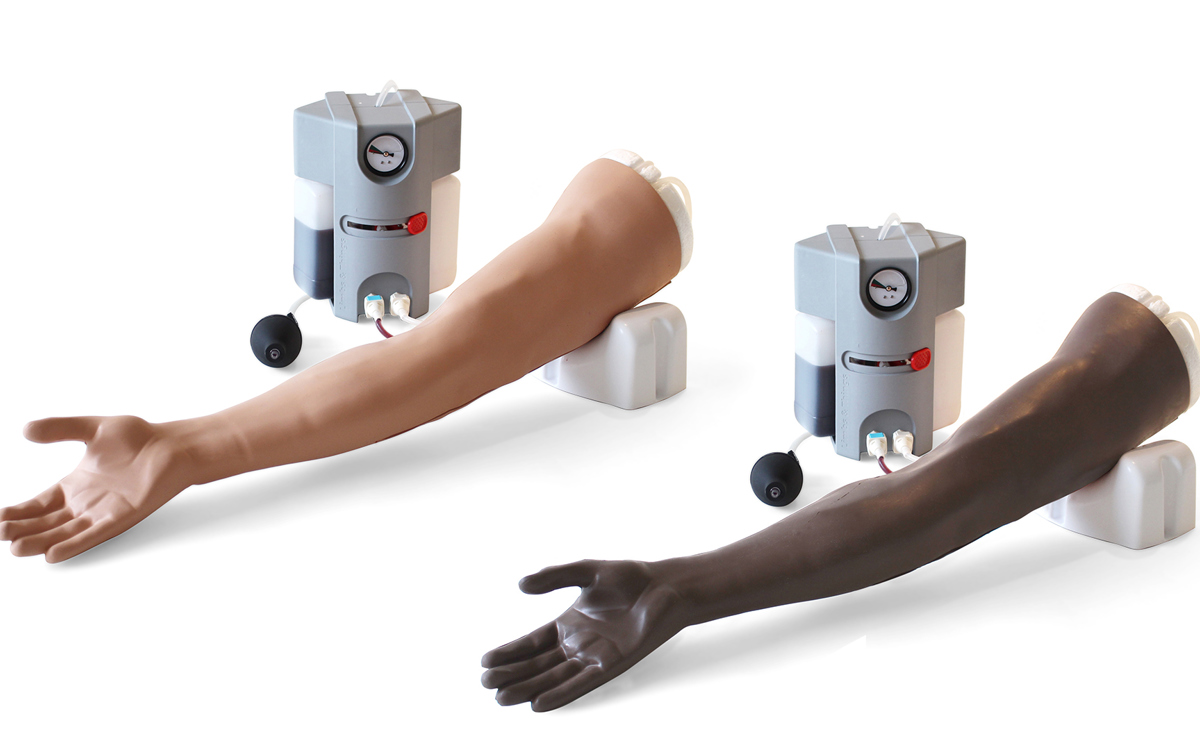Why Training is so Important when Learning Venipuncture
Explore the history of venipuncture and how our Limbs & Things Venipuncture Range can enhance curriculum learning.

The use of Peripheral intravascular cannula (PIVC), more commonly called peripheral Intravenous (IV) lines, is not a new concept, as they were initially experimented with as early at the 1600s. Some of the earliest publications relating to IV access was during the Cholera epidemic of the 1830s, when saline was used with dying patients.
However, routine use of intravenous lines did not occur until they were used to help care for wounded soldiers in World War I.1 Today, 90% of all hospitalised patients receive an IV, and it is estimated that more than 1 billion lines are placed globally every year.2,3 Generally, peripheral IVs are placed in the upper non-dominant extremity to allow for the administration of fluid for hydration, medications, and blood transfusions. But placement is not always easy, as “identifying access sites may be more difficult in specific patient populations such as children, the obese, pregnant women, those with dark-toned skin, patients in shock, or those whose veins have been compromised by previous chemotherapy or by intravenous drug abuse.”4
While nurses tend to be the primary inserters of IV catheters, many different healthcare professionals are taught to place a PIVC each year. But many learners never get the opportunity to place an IV during their training. In a survey of third- and fourth-year medical students, 65% of third year and 22% of fourth year medical students “never had an opportunity to place an IV”.5
Even with the enormous numbers of procedures completed each year, “rates of PIVC failure and unscheduled restarts are unacceptably high, with rates ranging from 33%-69%.” While these restarts use valuable resources of time and equipment, the cost to patients is often overlooked. “PIVC re-sites can be painful and distressing, with frequent cannulation attempts adversely affecting the person’s overall hospital experience”.6 In an international survey of adult consumers who had received more than one PIVC insertion in the previous five years, the number one determining factor of a successful PIVC insertion was well-trained staff. When asked additional open-ended questions about their IV therapy experience, major themes emerged related to the “importance of staff training and competence”, including technology-guided insertion, equal insertion competency among staff members, and safety and comfort for the patient.6
When considering curriculum related to IV insertion, simulation has grown in popularity over the past few years as a means for improving both competency and confidence in the skill. According to Nurse Key, “learning how to insert intravenous (IV) catheters is quite possibly the skill students look most forward to acquiring during their nursing education”.7 While it is no longer acceptable for students to practice on one another, “it is still necessary to teach students the proper technique of IV insertion and allow them to familiarise themselves with and learn how to manipulate IV equipment and supplies through the use of videos and mannequin arms”.7

With over 20 years of experience in manufacturing IV arms, the Limbs & Things Advanced Venipuncture Arm is a training model designed for the insertion of peripheral intravenous catheters and venipuncture. Ideal for all levels of learning, this training model utilises a pressurized pump and unique locking system to accurately simulate venipuncture, IV cannulation, and IV infusion training.
The unique Limbs & Things' skin locking feature ensures the model is easy to re-skin while also maintaining the lifelike palpability and haptics of the underlying basilic, cephalic, dorsal metacarpal and median cubital veins. Precisely mirroring a male right arm, the model effectively simulates real-life venipuncture occurrences, including blood flashback and the use of digital pressure to stem flow. Realism is further increased by the Advanced Pressurised Pump, which operates at a realistic blood pressure to provide trainees with a true-to-life and mess free learning experience.
The realistic arm skin and innovative vein gripping mechanism work in unison to deliver realistic and repeatable training, using a cost-effective modular vein system that promotes ease of use and reduces waste.
To find out more, visit our Venipuncture Arm Range.
References:
1: Rivera, A. M., et al., The history of peripheral intravenous catheters: How little plastic tubes revolutionized medicine. Acta Anaethesiologica Belgica. 2005, 56(3): 271-282.
2: Helm, R. E., et al., Accepted but Unacceptable: Peripheral IV Catheter Failure. Journal of Infusion Nursing. 2015; 38(3): 189-203.
3: Alexandrou, E., et al., International Prevalence of the Use of Peripheral Intravenous Catheters. Journal of Hospital Medicine. 2015; 10(8): 530-533.
4: Lamperti M, Pittiruti M. II. Difficult peripheral veins: turn on the lights. Br J Anaesth. 2013 Jun;110(6):888-91.
5: Woelfel, Ingrid, Takabe, Kazuaki. Successful intravenous catheterization by medical students. J Surg Res. 2016 Aug; 204(2): 351–360.
6: Cooke, Marie et al. Not “just” an intravenous line: Consumer perspectives on peripheral intravenous cannulation (PIVC). 2018; 13(2): e0193436.
7: Krolikowski, Shannon. IV Simulation Curriculum Development; Nurse Key.
Did you like this article?
Remember to share on social media and tag us below!

